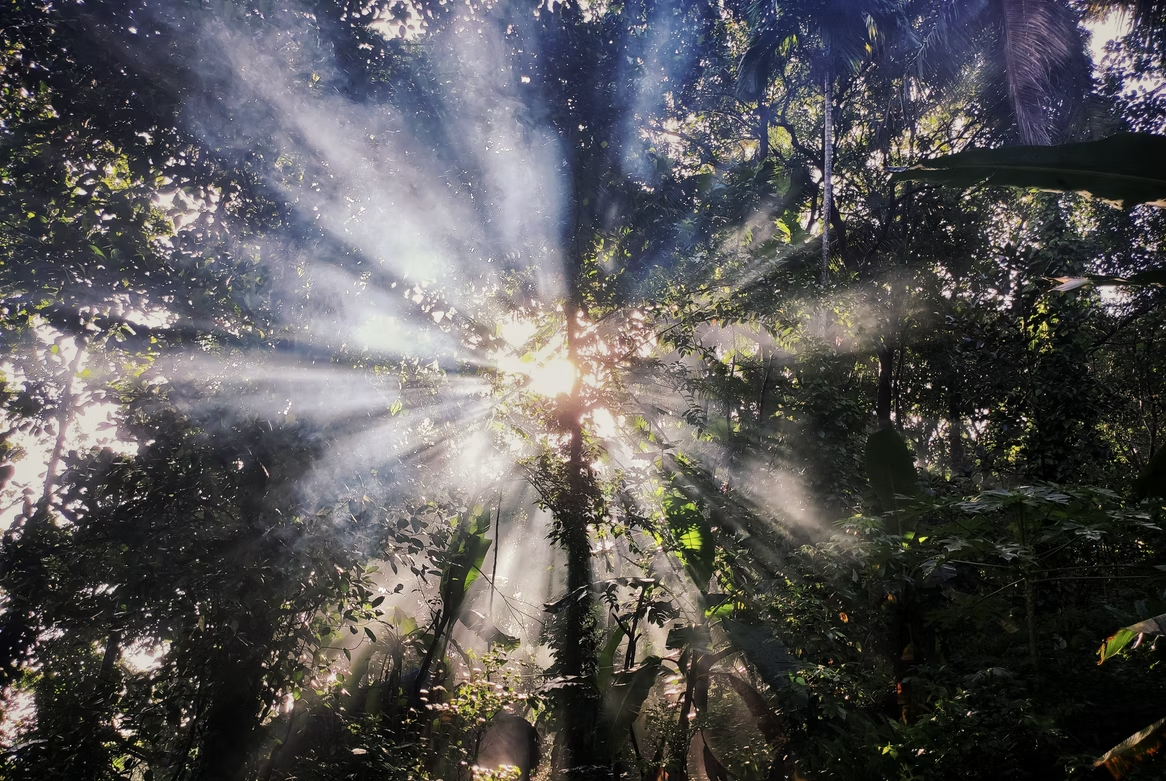-
Kevin
-
 May 19, 2023
May 19, 2023
-
 Common Questions
Common Questions
Whether you’re a die-hard fan of Japanese culture or have stuck to primarily English-speaking and American forms of entertainment, the word anime is one that you’ve likely come across once or twice — but what does it mean, and where did it come from? We’ll tell you.

Read on as we explore anime (/ ˈæn əˌmeɪ /) to uncover its definition, origin, and more. Let’s get started!
What Is the Definition of Anime?
In Japanese, our word of the day is written as “アニメ,” which means “anime,” and is short for the English word animation (アニメーション or animēshon). That said, what is an anime series or anime film, and what is the etymology of this word?
According to the Britannica Dictionary, the Japanese word anime refers to a style of animation that uses colorful images, strong anime characters, and captivating stories that have a lot of action. In other words, “anime” is an abbreviation for all Japanese animation. As is the case with English animation, there are a wide variety of animated works that fall under the umbrella of anime.
What Are The Various Types of Anime?
Below you will find a list of the most common anime categories, their definitions, as well as a few of the more popular titles from each:
Shónen — based around a young teenage boy who is usually very optimistic in nature, with the coming of age journey being the main focus. The protagonist wants to achieve something in their life no matter what it takes.
- Dragon Ball Z
- Naruto
- Bleach
- Demon Slayer
- Attack On Titan
- One Piece
- Fairy Tail
- Black Clover
Seinen — with shonen aiming at the younger crowd of males, seinen targets an older audience with its depictions of war, science fiction, politics, violence, familiar relationships, and death.
- Ghost In The Shell
- One-Punch Man
- Samurai Champloo
- Hellsing
- Cowboy Bebop
- Code Geass
- Black Lagoon
- Tokyo Ghoul
- Plastic Memories
- Tiger and Bunny
- Gantz
Kodomomuke — this type of anime is more of a target audience demographic than an actual genre. Kodomomuke means child in Japanese, so as you may have guessed, this type of anime is designed for young children to enjoy.
Comedic and episodic in nature with no real plot or story to follow, kodomomuke aims to teach children how to be genuinely good people.
- Anpanman
- Pokemon
- Hello Kitty
- Digimon
- Doraemon
Josei — Japanese for “young lady,” josei is aimed at young adult women. The josei genre explores deeper topics than most anime, such as sexual assault or infidelity.
- Honey and Cover
- Usagi Drop
- Princess Jellyfish
- Eden of the East
- Paradise Kiss
- Loveless
- Wotakoi: Wotaku Ni Koi waMuzukashii
- Nodame Cantabile
Shójo (Shoujo) — where shonen focuses on fighting and action, shojo takes a different approach to the coming of age journey and focuses more on relationships and romance. Anime in the shojo category are often particularly dramatic in nature.
- Fushigi Yuugi
- Banana Fish
- Akatsuki no Yona or Yona of the Dawn
- Kaichou Wa Maid-Sama!
- Sailor Moon
- Fruits Basket
- Kami-samaHajimemashita
- Ouran High School Host Club
- Vampire Knight
Harem — an anime genre where there’s one main character who’s surrounded by multiple characters of the opposite sex who are usually all potential love interests.
- High School of the Dead,
- Clannad
- Zero no Tsukaima
- High School DxD
Mecha — anime movies and shows about cyborgs, robots, and/or the people piloting them. This subgenre primarily appeals to the Otaku subculture in Japan.
- Ghost in the Shell
- Astro Boy
- Neon Genesis Evangelion
- Macross Frontier
Fantasy anime shows — for some, a much-needed break from reality, the fantasy genre or category is all about living in your imagination, from anthropomorphic animal people to dragons, fancy sword fights, and everything in between.
- Goblin Slayer
- Overlord
- Black Clover
- JoJo’s Bizarre Adventure
Comedy — as you may have guessed, this category is all about anime cartoons that give the audience some giggles and laughs.
- Gintama
- K
- Is This a Zombie
- Oreimo
- Etotama
- Sayonara Zetsubou Sensei
Hentai — arguably one of the most common types of anime, hentai, with its erotic themes, shows some explicit content while maintaining a minor plot. Most fan manga comic books or doujinshi fall into this category.
- Adventure Kid
- Angel in the Court
- Fish in the Trap
- F³
Romance — either leaving the audience in a ball of tears sobbing over the plotline or dancing for joy, romance in anime is the same as any other romance category you may find.
- Inuyasha
- Ore Monogatari
- Yuri on Ice
Horror — usually revolving around a theme of demons, ghosts, or curses, oftentimes leading to excessive gore and blood.
- Monster
- Danganronpa
- Tokyo Ghoul
Isekai — this type of anime is not based on reality but set in a different unknown world.
- Restaurant to Another World
- Re-Zero
- Elf-san
- Welcome to Japan
- Bleach
Ecchi — while it may have explicit content like hentai anime, ecchi has far less sexual content.
- Kill La Kill
- Food Wars
- Punch Line
- Kakegurui
- High School DxD
Reverse Harem — usually based around a dating simulation game or some kind of an “otome,” game. The female equivalent to harem anime.
- Akatsuki no Yona
- Diabolik Lovers
- Ouran High School Host Club
- Meiji Tokyo Renka
Slice of Life — anime that contains the concept of moe, which itself can be a confusing concept for some.
- Fruits Basket
- Wotakoi: Wotakuni Koi waMuzukashii
- Tsurezure Children
- Kami-samaKazoku
Other less common anime categories include:
- Shounen-Ai (yaoi) — anime about boys who are in love with boys
- Shójo-ai (yuri) — anime about girls who happen to be in love with other girls
- Lolicon — anime with the main character being a young girl who is usually flat-chested with larger than average eyes in an attempt to depict a cuter feel to the audience. The slang word chibi or チビ, meaning small cute thing, is commonly used in this genre.
- Shotacon — male version of a lolicon
A Final Word
So, what does anime mean, you ask?
Simply put, our word of the day refers to an artistic style of Japanese film and television animation that has captured a massive global fanbase throughout the years.
You can find an anime about pretty much any topic in a number of different genres. Whether you’re looking for some laughs or prefer to ugly cry on the couch, there’s an anime for you.
Sources:
Anime Definition & Meaning | Britannica Dictionary




